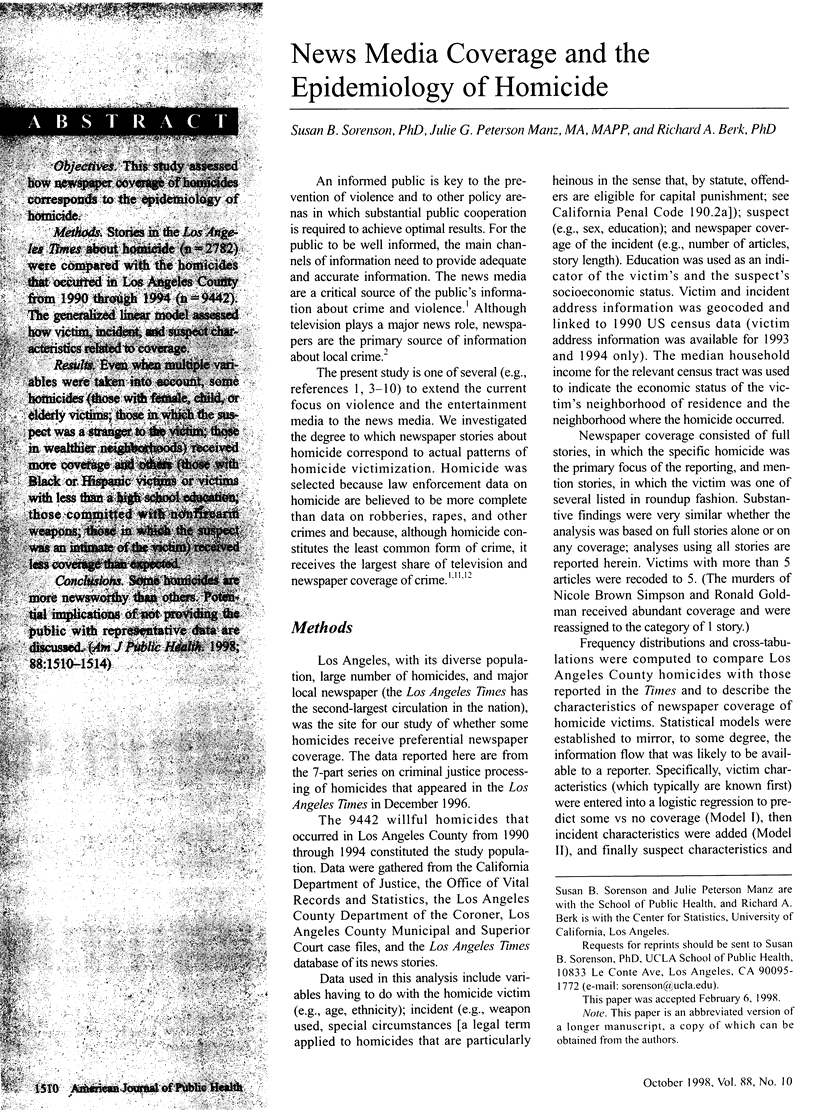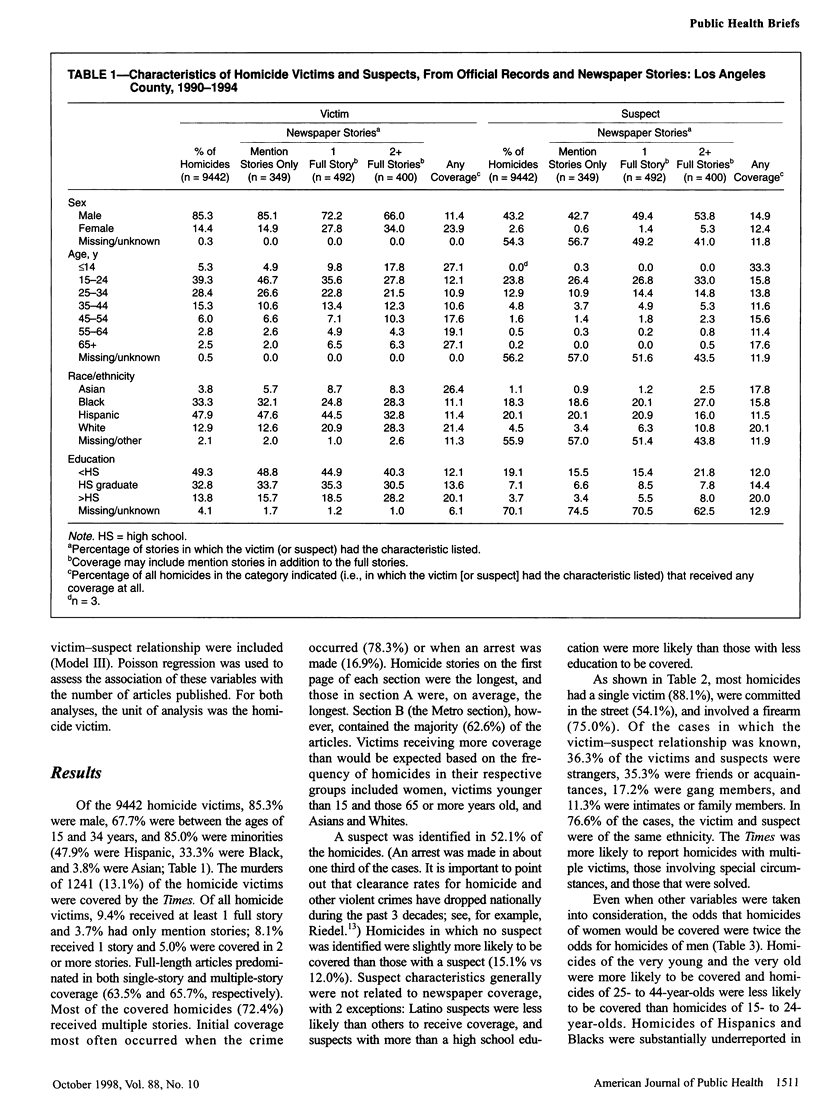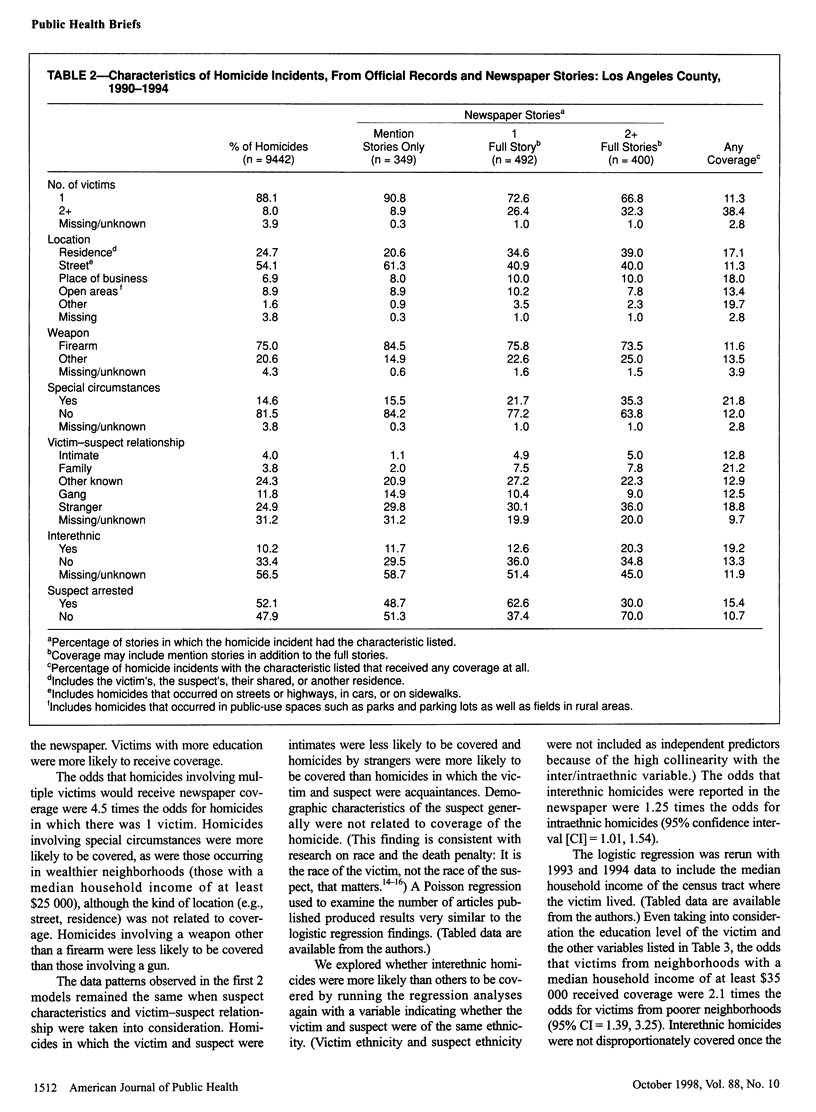Abstract
OBJECTIVES: This study assessed how newspaper coverage of homicides corresponds to the epidemiology of homicide. METHODS: Stories in the Los Angeles Times about homicide (n = 2782) were compared with the homicides that occurred in Los Angeles County from 1990 through 1994 (n = 9442). The generalized linear model assessed how victim, incident, and suspect characteristics related to coverage. RESULTS: Even when multiple variables were taken into account, some homicides (those with female, child, or elderly victims; those in which the suspect was a stranger to the victim; those in wealthier neighborhoods) received more coverage and others (those with Black or Hispanic victims or victims with less than a high school education; those committed with nonfirearm weapons; those in which the suspect was an intimate of the victim) received less coverage than expected. CONCLUSIONS: Some homicides are more newsworthy than others. Potential implications of not providing the public with representative data are discussed.
Full text
PDF






